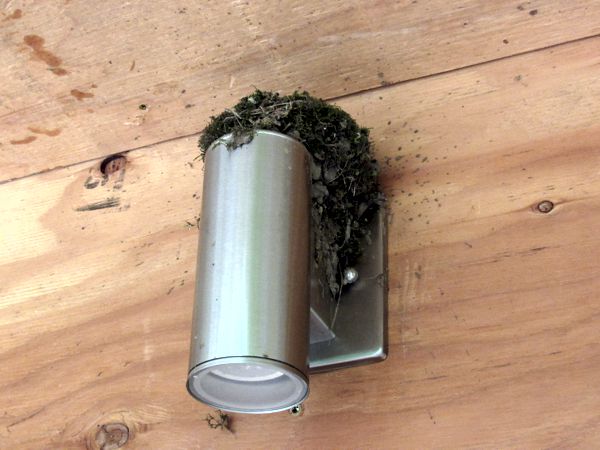Chapter 11. CPR
Nightmare's End

The commercial property nightmare was finally over—three years and two months after it had begun. I should have been ecstatic; instead, I was thoroughly spent. Numb. What little enthusiasm I had was beaten out of me during the final weeks leading up to the closing, which were fraught with all manner of snafus and last-minute haggling. Plus, the weather was miserable, my health had taken a serious nosedive, and I was a hair's breadth shy of a nervous breakdown. It was like skidding through the finish line in a totally wrecked car.

But the worst part was that I still faced an uncertain future: owing to lawyer's fees, additional deposits, property tax liens and a host of other deductions, I ended up with roughly half the amount I would have net had the transaction wrapped in a timely fashion. I could only hope it would be enough to finish the house; I wouldn't know until after I'd started getting estimates for some of the really big-ticket items, like the doors, windows and roof.

Plus, things were different than they were back in October 2016, when work on the house ground to a halt. In spite of having Lyme Disease and Sarcoidosis, I was perhaps the fittest I'd been since my early 30s, when I was busy gutting and flipping my first home. By contrast, I'd been nearly immobilized for two years. Not to mention acutely depressed. All the physical gains I'd made building my home had been lost.

I might have been able to recover some of my strength and flexibility, but I'd never be back to where I was. My knee had become the stopping point: I needed a new one, but the likelihood of that happening was vanishingly small. And so, as I embarked on the last, long leg of the run to get the house done, I was faced with the fact that progress would be painfully slow, in more ways than one.


With my head reduced to oatmeal, I needed a solid action plan. Fortunately, I'd already created one, which I turned into a to-do list that I can keep updated. The biggest challenge, however, was readjusting my mind and body from complete inaction to intense action. Plus, I had to be prepared for any number of unforeseen speed bumps that would almost certainly pop up along the way. Indeed, there were many—way too many, starting with electric service.

Hard Choices Ahead
Much tighter finances meant having to re-think many things. One was how much work I'd do myself: it became "as much as humanly possible," forcing me to tackle stuff I'd considered foregoing due to health issues. The jobs of insulation and floor tiling were the first to be moved back under the DIY column, even though they'd present significant physical challenges.
The roof was the biggest single expense. From day one my choice was standing seam steel. But with a 1:12 pitch, it was also the only allowable option, which meant I couldn't switch to significantly cheaper asphalt shingles. Professionally installed, I was looking at $35K. DIY installation would only knock off about $5K, and since I'd never done steel roofing before, the potential of screwing up was pretty high; I much preferred investing the additional capital to ensure it was done right.

Among other things, I reconsidered my choice of siding. Before the real estate deal was settled, I'd chosen standing seam steel to match the roof. But that could run as much as $20K. Changing my selection criteria to "most economical" meant DIY "faux board and batten," which I'd used for the Epiphany. It's really just cheap grooved exterior plywood (a.k.a. T-111) with pressure-treated slats applied over the grooves. Total projected cost was less than $2K. I could live with that.
Other hard choices included things like the appliances: I was looking at over $12K worth, making it a source of considerable consternation. They weren't top-of-the-line models, but they weren't budget-conscious, either. But if I changed certain selections, it would almost certainly involve some re-framing. A lot of online comparison-shopping lay ahead.
One Problem Ends, Another Begins
Unfortunately, by December 2018 it became painfully clear: I wouldn't have enough capital to finish the house. I'd have to get creative with my finances. Some of the things I did included:
- start a GoFundMe campaign
- auction off most of my hobby items
- file for retirement benefits a year earlier than planned
- recycle materials and supplies left over from prior years
These tactics have helped keep me alive and keep the project going, albeit at an erratic, greatly reduced pace. But I hadn't thrown in the towel just yet—not when I was a hair's breadth from moving in.
Also See...
- The Face On the Floor
- First Light
- Happy Accidents
- The Kindness of Others
- Lessons Learned... So Far
- Milestones
- Nor'easter Madness II
- Positive Side Effects
- Pretending I Live Here
- Rethinking More Stuff
- Timelapse I
- Timelapse II
- Timelapse III
- Timelapse IV
- Yard Work
